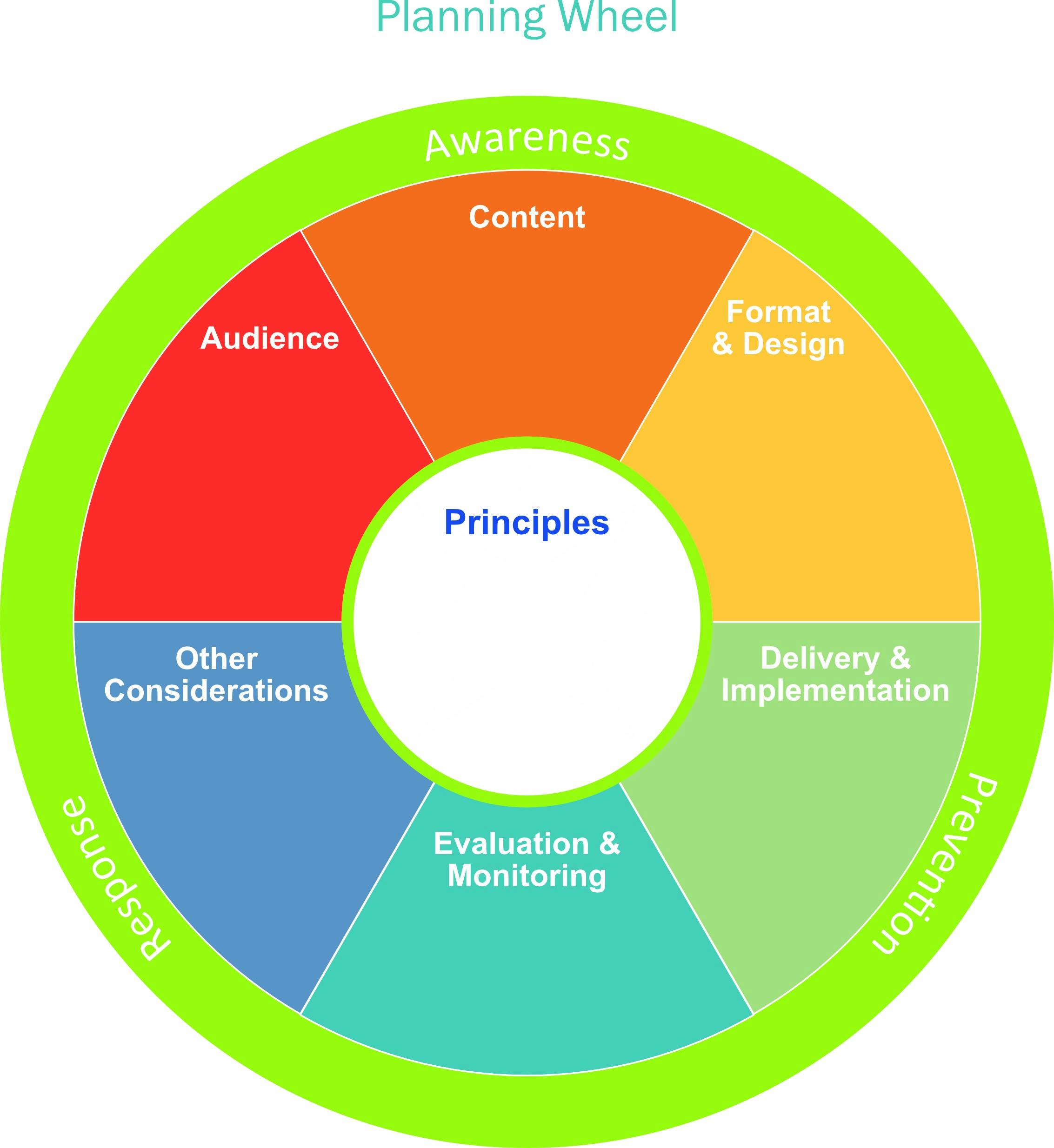Next Steps
The information gathered in the previous activities should help you to identify which SV training or resources to adapt to your context.
You can use the following planning wheel to help determine what steps are needed next to adapt and develop this training or resource.
Inner ring: What principles are included in the SV training or resource you have identified? You can consider the eight principles described in this toolkit as well as other principles identified through your evaluation process. Which are relevant to your needs and context?
Middle ring: What needs to happen to adapt this training or resource to your context? What are the next steps? For each of the six elements, there is space to describe what is already in place, barriers to implementation, and suggestions for moving forward.
Outer ring: Does this training fall into the area of Awareness, Prevention or Response? Are there steps you need to take to ensure that this initiative “fits” with other SV activities and initiatives at your PSI?


